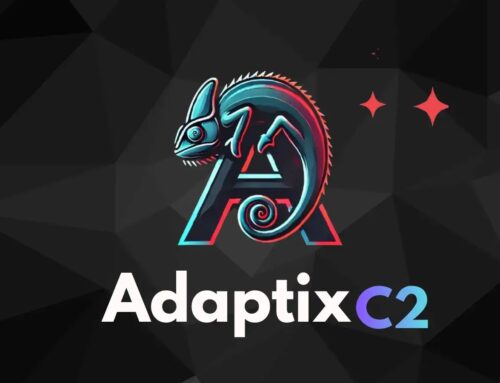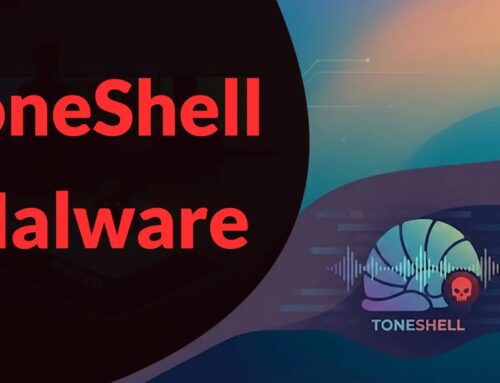
New Magecart Skimmer Attack With Malicious JavaScript Injection to Skim Payment Data
The Silent Menace: New Magecart Skimmer Attack Leverages Obfuscated JavaScript to Steal Payment Data
The e-commerce landscape is under constant siege, a truth starkly reinforced by the emergence of a sophisticated new Magecart-style attack campaign. This refined threat employs heavily obfuscated JavaScript to silently harvest sensitive payment information directly from online shoppers. First identified in mid-September 2025, this ongoing skimming operation highlights the evolving tactics threat actors utilize to compromise digital storefronts and underscores the critical need for robust cybersecurity measures.
Understanding Magecart Attacks and Skimming
Magecart is not a single entity but a collective term for various cybercriminal groups that engage in web skimming. Their primary objective is to inject malicious code, typically JavaScript, into e-commerce websites. This code intercepts payment card details and other personal information as customers enter them during the checkout process.
- Web Skimming: This technique mimics the physical credit card skimmers seen at ATMs or gas pumps, but operates entirely online.
- JavaScript Injection: Attackers compromise website vulnerabilities (e.g., outdated plugins, weak administrative credentials) to inject their malicious code directly into the site’s source.
- Data Exfiltration: Once gathered, the stolen data is exfiltrated to attacker-controlled servers, often disguised as legitimate traffic.
Anatomy of the New Attack Wave
The latest Magecart campaign differentiates itself through its advanced use of obfuscation. Threat actors are employing sophisticated techniques to conceal their malicious JavaScript, making detection and analysis significantly more challenging for security teams.
Key characteristics identified in this new wave include:
- Heavy JavaScript Obfuscation: The malicious code is intentionally garbled, using various encoding, encryption, and variable renaming techniques to evade signature-based detection and human analysis. This makes it difficult to ascertain the code’s true intent without extensive reverse engineering.
- Strategic Injection Points: While the specific vectors for initial compromise can vary, attackers often target vulnerable third-party scripts, content delivery networks (CDNs), or directly compromise the e-commerce platform’s core files.
- Payment Data Targeting: The primary goal remains the theft of payment card numbers, expiration dates, CVVs, cardholder names, and billing addresses.
- Stealthy Exfiltration: Stolen data is often sent to domains that mimic legitimate services or are hosted on compromised servers, further complicating detection by network monitoring tools.
Impact on E-commerce and Consumers
The implications of such attacks are severe, impacting both businesses and their customers.
- For Businesses:
- Financial losses due to chargebacks and fraud.
- Reputational damage and loss of customer trust.
- Potential regulatory fines (e.g., PCI DSS non-compliance).
- Costly incident response and remediation efforts.
- For Consumers:
- Financial fraud and identity theft.
- Distress and time spent resolving fraudulent charges.
- Erosion of trust in online shopping.
Remediation Actions and Proactive Defense
Defending against evolving Magecart threats requires a multi-layered and proactive approach. E-commerce platforms and developers must prioritize security at every stage.
- Regular Security Assessments: Conduct frequent vulnerability scans and penetration tests of your website and associated third-party components.
- Software Updates: Keep all e-commerce platforms, plugins, themes, and server software patched and up-to-date. Many Magecart campaigns exploit known vulnerabilities.
- Content Security Policy (CSP): Implement a strict CSP to whitelist allowed sources for scripts, styles, and other resources. This can prevent unauthorized script injections.
- Subresource Integrity (SRI): Use SRI hashes for all third-party scripts to ensure that the content delivered has not been tampered with.
- Real-time Monitoring: Deploy client-side security solutions and website integrity monitoring tools that can detect unauthorized changes to your website’s code, especially on checkout pages.
- Network Traffic Analysis: Monitor outgoing network traffic for unusual connections or data exfiltration attempts from your payment pages.
- Strong Access Controls: Enforce strong, unique passwords and multi-factor authentication (MFA) for all administrative accounts. Regularly review user privileges.
- Employee Training: Educate staff, particularly those with administrative access, about phishing, social engineering, and potential compromise vectors.
While this particular campaign has not yet been assigned a specific CVE, similar vulnerabilities exploited in the past (e.g., cross-site scripting vulnerabilities like those covered by CVE-2023-0001 for illustrative purposes) often pave the way for such attacks.
Tools for Detection and Mitigation
Leveraging specialized tools is crucial for identifying and defending against Magecart skimming operations.
| Tool Name | Purpose | Link |
|---|---|---|
| Content Security Policy (CSP) | Browser security mechanism to restrict script execution sources. | MDN Web Docs |
| Subresource Integrity (SRI) | Ensures integrity of subresources (e.g., scripts, stylesheets). | MDN Web Docs |
| PerimeterX/Source Defense | Client-side security platforms specializing in Magecart detection and prevention. | PerimeterX / Source Defense |
| Malwarebytes Browser Guard | Consumer-level browser extension capable of blocking malicious URLs. | Malwarebytes |
| Sucuri SiteCheck | Online scanner for detecting malware, blacklist status, and website errors. | Sucuri |
Conclusion
The latest Magecart skimmer attack campaign, with its reliance on advanced JavaScript obfuscation, represents a significant escalation in the ongoing battle for e-commerce security. For IT professionals, security analysts, and developers, the message is clear: proactive defense, continuous monitoring, and a committed understanding of evolving threat tactics are essential. Implementing strong security hygiene, leveraging client-side protection, and maintaining a robust incident response plan are non-negotiable elements in safeguarding online transactions and protecting customer data from these insidious threats.





